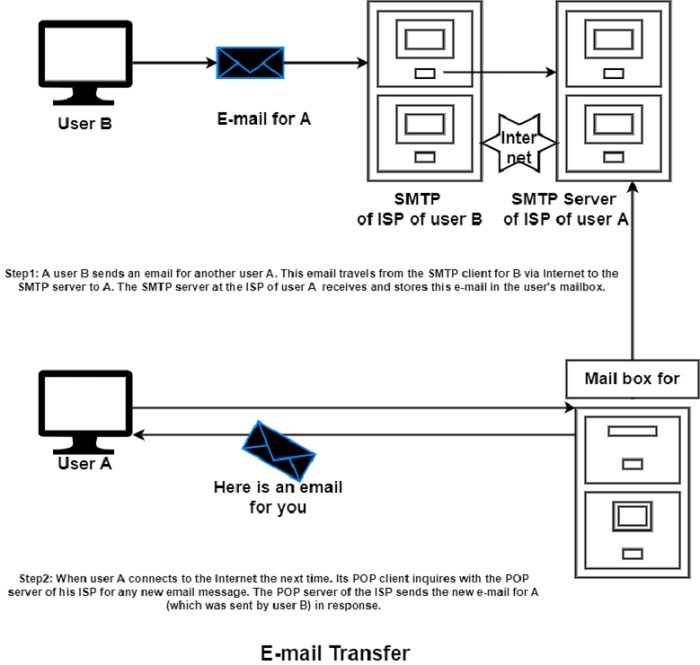
 Data Structure
Data Structure Networking
Networking RDBMS
RDBMS Operating System
Operating System Java
Java MS Excel
MS Excel iOS
iOS HTML
HTML CSS
CSS Android
Android Python
Python C Programming
C Programming C++
C++ C#
C# MongoDB
MongoDB MySQL
MySQL Javascript
Javascript PHP
PHP
- Selected Reading
- UPSC IAS Exams Notes
- Developer's Best Practices
- Questions and Answers
- Effective Resume Writing
- HR Interview Questions
- Computer Glossary
- Who is Who
What is the POP Protocol in Computer Network?
POP stands for Post Office Protocol. It provides a standard mechanism for retrieving emails from a remote server for a mail recipient. For instance, suppose that a home user A usually connects to the Internet using a dial-up connection to an ISP.
Suppose that another person, B, has sent an e-mail to A, when A is a net connected to the Internet. The email gets stored in the mailbox for user A provided by the ISP.
When A connects to the Internet the next time and wants to see the new e-mail that has arrived, he opens his email client program. That email client program on his computer, in turn, invokes a POP client who contacts the POP server hosted by ISP. The POP server then opens the mailbox for user A and sends the emails that arrived for him to the POP client.
In simple terms, a user who wants to receive emails but does not have a permanent connection to the internet uses a POP client to pull emails from the POP server.
The POP server consults the user’s mailbox to perform this task shown in the figure below −

Requirement of POP
We know that emails are stored on a centralised e-mail server, the SMTP server. The SMTP server expects the destination host (i.e., the email recipient) to be online all the time. Without this, it cannot create a TCP connection with it and, therefore, cannot forward the email message to the destination host.
As we know, desktop computers are usually powered down when the business hours are over. Therefore, the solution to this problem is having a POP server, whereas the SMTP server in an organization receives and stores all the incoming emails for any user in that organization. It is not used for transporting the emails to the end destination.

